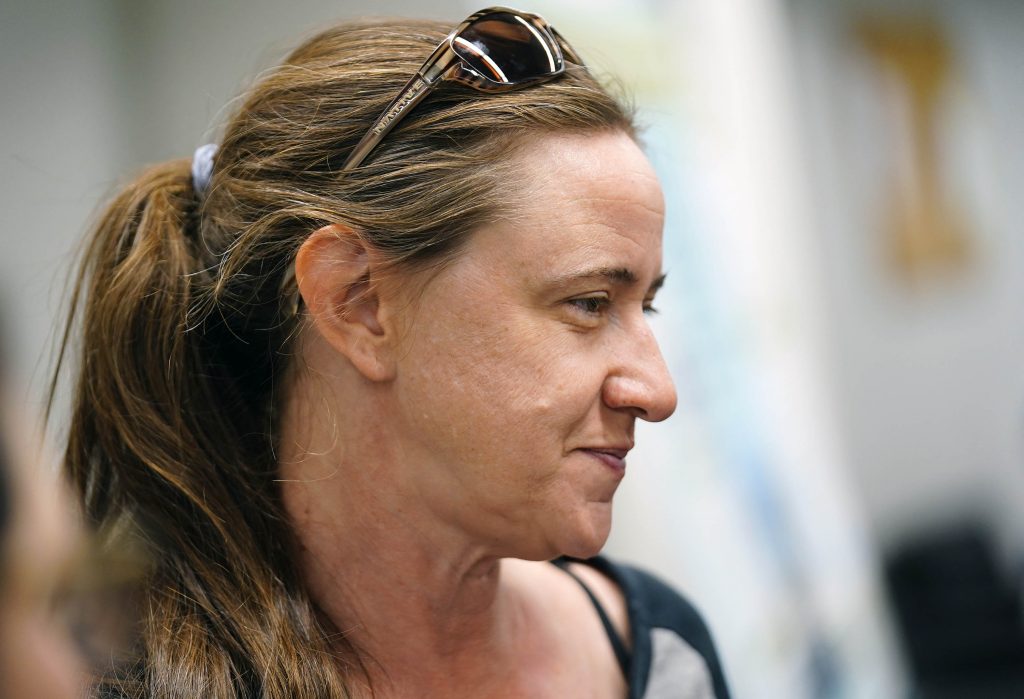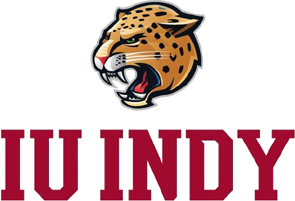
Photos by Ralph Freso
The black-tailed prairie dogs, all nestled in their burrows, weren’t so happy to be ferreted away from their digs.
But Grand Canyon University students Aileen Del Real, Megan Victory and Amanda Nelson nabbed them nonetheless — and for good reason. They volunteered in March at the rolling grasslands that’s the Las Cienegas National Conservation Area, about 50 miles southeast of Tucson, to check on how the little guys were doing.

The Arizona Game and Fish Department started reintroducing the native species into the area in 2008. Back then, their outlook was stark; a black-tailed prairie dog hadn’t been seen in the area for decades.
Now, twice a year, volunteers take the creatures’ measurements and make sure they’re microchipped for trapping.
But Del Real, Victory and Nelson also were there to do work on their project for the Biological Sciences Capstone Showcase and were among a dozen groups presenting their work Thursday in the Technology Building.
“This is the first group of students to complete the capstone course, and there has been lots of innovation,” said Adrienne Crawford, GCU biology, ecology and environmental science instructor.

An important aspect of the capstones was to pair students with clients from around the state, such as Arizona Game and Fish, the Maricopa Audubon Society and the Friends of Saguaro National Park. They developed a project plan for those clients and, beyond that, developed relationships with them. Some of the students, Crawford said, had been offered jobs by a client that attended the showcase.
The student presenters also will be the first to graduate from GCU’s Bachelor of Science in Biological Sciences program, walking the GCU Arena stage at 9 a.m. Friday.
“I’m so proud of these students,” said Dr. Binaben Vanmali, Assistant Dean of Science, who helped create the program for students seeking a career in health and disease, global climate change, sustainability, environmental conservation and threats to species.
Del Real, Victory and Nelson’s program-ending capstone project was to measure the nitrogen content in the soil to see if the black-tailed prairie dogs at Las Cienegas had expanded their territory. While other researchers have measured nitrogen levels in plants to gauge if the colony had grown, the GCU group thought testing the soil would lead to a better assessment.

Prairie dogs are known for adding nitrogen where they’re grazing, digging up the element and circulating it in the soil when they’re digging their burrows.
“So the nitrogen is more available for the plants. It leads to biodiversity and a healthier ecosystem,” said Victory.
Del Real added: “Being able to test the soil to tell if the population is expanding is HUGE for this effort.”
The team worked with birds and mammal biologist Jennifer Presler and Small Mammal Project Coordinator Holly Hicks of Arizona Game and Fish.
“It was really great to work with them … and it was actually beneficial for us. They were a great help, and I love seeing results that are usable in the future,” Presler said.
Nicole Goulart worked with the Maricopa Audubon Society for her project, “Impact of Solar Expansion on Cactus Wren and Saguaro Populations.”

She thought of the idea when she was driving home to California during winter break and saw solar fields being installed on the landscape.
“The distance to travel over them or between them is detrimental to the population of cactus wren, which are native to the Sonoran Desert,” Goulart said. “When the habitat fragments, the area the birds are able to live in gets smaller, they will become more isolated in their breeding, populations will become smaller, and that will lead to population declines.”
Goulart, like the other students at the showcase, spoke passionately about her project; “It was a lot of fun learning more about the cactus wren and saguaros because they’re native to Arizona; it was cool to learn about species I didn’t know about.”
Anicca Herrera and Mia Becera authored the study “Increasing Native Pollinators with the Abundance of Native Plants in the Sonoran Desert.”
Working with Audubon Southwest, they quickly discovered that the pollinator population — animals that move pollen to assure a plant’s successful seed and fruit production — is slowly declining in the Sonoran Desert because of the same problem the cactus wrens are experiencing — habitat fragmentation.
The students wanted to see if they could increase the number of pollinators to a particular area by planting native plants.

Herrera and Becera read a study from South Dakota State University in which a botanical garden plot with all-native species attracted more pollinators than the grasslands, which included invasive species.
The two GCU researchers recommended educating people about the importance of growing native plants when it comes to increasing bees, butterflies, hummingbirds and the like.
Becera said what she found most interesting was discovering how pollinators don’t really get along with native plants.
“I just found it cool how everything just works together,” said Herrera of the beauty of an ecosystem. “I never knew about all of these native plants and invasive plants. I never knew the benefits, either or. They’re plants. What’s the difference? That’s what I thought.”
The beauty of collecting rainwater was on the minds of Eleni Pappas, Crystal Flores, Kacee Kitzman and Nezzarae Choate, whose project client was Skywater Rainwater Collection, a rainwater-harvesting design, installation and consulting company.
Their project, “Infiltration Basins for Passive Rainwater Harvesting in Gila Bend, Arizona,” focused on one neighborhood in Gila Bend, an area known for flash floods because the dry, compacted ground just can’t absorb the rain.
They explored a passive rainwater harvesting system in which rainwater runoff from roof rain gutters is collected into a pond, or rainwater harvesting basin. Those areas serve as living sponges to store water, thus increasing the city’s vegetation, decreasing water bills and creating a cooling effect to mitigate urban heat islands.

Pappas said this kind of system would make the soil more porous and, ultimately, help with flash flooding. What she found most interesting in doing this project was that some states impose a heavy tax for collecting rainwater.
“That was pretty fascinating.”
Flores didn’t even know these kinds of systems existed. “Why aren’t people doing this? It was kind of interesting learning about it,” she said.
Pappas added, “Honestly, it was really cool talking to our client. He had a lot of insight, a lot of knowledge. He really helped guide our project.”
David Bergman, State Director of the U.S. Department of Agriculture’s APHIS Wildlife Services, also helped feed into GCU’s biological sciences students: “Every group I talked to was very into their project,” he said. “They’re very ambitious, very hardworking … For what they had for time, I think it was a good learning experience.”
Manager of Internal Communications Lana Sweeten-Shults can be reached at [email protected] or 602-639-7901.
Related content:
GCU News: Class outside? Students, state biologists are game















